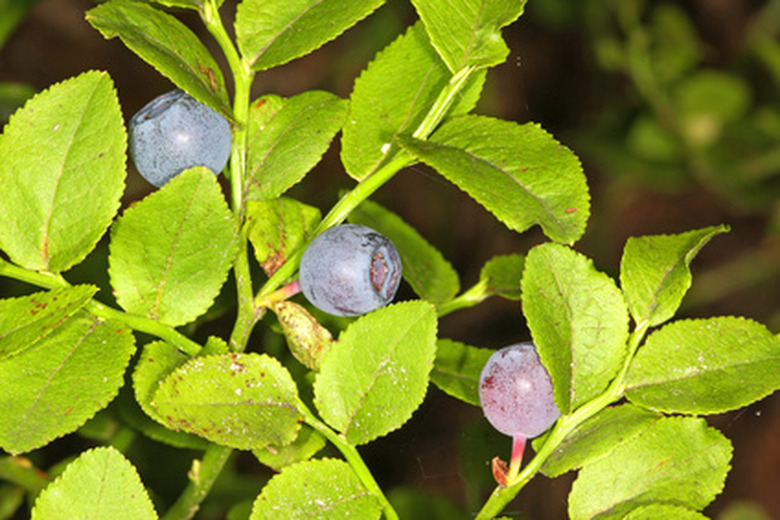The Best Varieties Of Blueberry Hedges
Using blueberry bushes can be an attractive and tasty way to form a hedge. If you are looking to create a uniform look, but still want fruit, use a variety of highbush blueberries, which are self-fertile. Although, if you want more fruit, you may want to plant at least two different varieties. When planting blueberry hedges, plant the bushes about 2-1/2 to 3 feet apart.
Jersey
Jersey is a tall, fast-growing northern highbush that can reach heights of 6 to 7 feet. It ripens late in the season. It will tolerate a variety of soil types. Berries are small to medium-sized, but sweet and great for use in baking. It is hardy in USDA Zones 4 through 8.
- Using blueberry bushes can be an attractive and tasty way to form a hedge.
- If you are looking to create a uniform look, but still want fruit, use a variety of highbush blueberries, which are self-fertile.
Bluejay
Bluejay is a northern highbush that grows about 5 to 7 feet tall. It is very vigorous and fast growing. Berries are medium-sized with a mild flavor that arrive early to midseason. It is hardy in USDA Zones 4 through 7. Bluejay bushes are hardy and easy to establish.
Rubel
Rubels are northern highbushes that grow about 5 to 8 feet tall with a 3 to 4 foot spread. It is adaptable to a variety of soil types. Berries arrive mid to late season and are small with an intense flavor. They are hardy in USDA Zones 4 through 7.
- Bluejay is a northern highbush that grows about 5 to 7 feet tall.
- Rubels are northern highbushes that grow about 5 to 8 feet tall with a 3 to 4 foot spread.
Bluecrop
Bluecrop is a northern highbush known for its disease resistance and adaptability to various growing conditions. It grows about 4 to 6 feet tall. Berries are medium to large sized and will arrive midseason. Proper pruning is essential or it can overbear. It is hardy in USDA Zones 4 through 7.
Patriot
Patriot is a compact northern highbush that will grow about 3 to 5 feet high with a similar spread. Its early season berries have a tangy flavor. Patriot is very cold hardy and does well in wetter soils than other varieties. It is hardy in USDA Zones 3 through 7.
- Bluecrop is a northern highbush known for its disease resistance and adaptability to various growing conditions.
- Patriot is a compact northern highbush that will grow about 3 to 5 feet high with a similar spread.
Bluetta
Bluetta is a shorter, compact variety of northern highbush that grows about 3 to 5 feet high. Its medium-sized berries ripen early and have a tangy, wild flavor. It is excellent for colder areas that receive late spring frosts. It is hardy in USDA Zones 4 through 7.
Sunshine Blue
Sunshine Blue is a variety of southern highbush with a low chilling requirement of 150 hours. It will tolerate soils with a higher pH. Berries are mid-season, dime-sized with a tangy flavor. This bush will only grow about 3 to 4 feet high with a similar width. It is hardy in USDA Zones 5 through 10.
- Bluetta is a shorter, compact variety of northern highbush that grows about 3 to 5 feet high.
Sierra
Sierra is a hybrid of northern and southern highbush blueberries. It is fast growing and vigorous bush that will adapt to most soil types. Its mid-season berries are quarter-sized with an excellent flavor. It will grow about 5 to 7 feet high. It is hardy in USDA Zones 5 through 8.
Northblue
Northblue is a variety of half-high blueberry that grows about 2 to 3 feet high. It is hardy in USDA Zones 3 through 7. It is very cold hardy. Its medium-sized berries have a "wild" taste and ripen mid-season.
- Sierra is a hybrid of northern and southern highbush blueberries.
- Its medium-sized berries have a "wild" taste and ripen mid-season.
